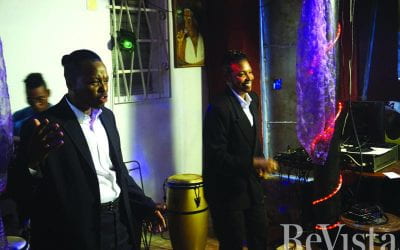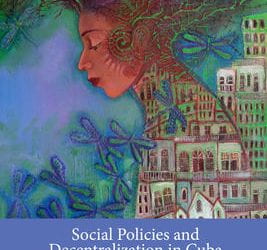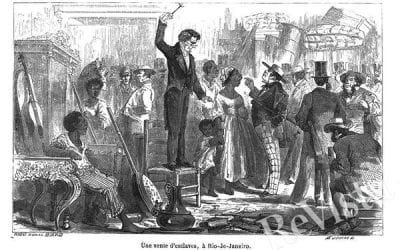Matos Series Inaugurated
On October 3, 2017, the David Rockefeller Center for Latin American Studies and the Moses Mesoamerican Archive inaugurated the Eduardo Matos Moctezuma Lecture Series in Mexico City. A Harvard delegation traveled to Mexico City to take part in this historic event that included a behind-the-scenes tour by Eduardo Matos himself of Templo Mayor, one of the main Aztec temples at their capital of Tenochtitlan. Pictured here, Brian Farrell, Faculty Director of DRCLAS (left), listens as David Carrasco, Neil L. Rudenstine Professor of the Study of Latin America at Harvard (center), shares anecdotes with the Harvard deans and senior officials about his many decades of friendship and fruitful collaboration with Matos, the most famous archaeologist in Mexico who is renowned for his excavation of Templo Mayor (right).
The night of Matos’ lecture at the Museo Nacional de Antropología, Professor Carrasco was especially enthusiastic to present a gift to Matos: an original copy of a painting by Mexican-American, Los Angeles-based artist George Yepes, commissioned to create the visual symbol for the lecture series. The painting by Yepes, titled “El Caballero Águila,” is a monumental work, measuring five by four feet. The composition is defined by the Mexican flag overlaid with a portrait of Matos excavating Templo Mayor just below the Mexican coat of arms, which is derived from an Aztec legend. DRCLAS would like to thank José Antonio Alonso for his generous support and David Carrasco for his leadership in the establishment of the Eduardo Matos Moctezuma Lecture Series.
Winter 2018, Volume XVII, Number 2
Related Articles
Transforming Havana’s Gay Ambiente
The epicenter of Havana’s gay ambiente might be La Rampa—a stretch of Calle 23 in the touristy El Vedado neighborhood— but the peripheral neighborhoods of Havana are also…
Social Policies and Decentralization in Cuba
From my snapshot views of Cuba in ve visits over the years, two eye-opening moments stand out. In 1980, after visiting one workplace after another where union and management…
Slavery and Precarious Freedom
Slavery was a form of labor exploitation in which workers became the property of others; slaves were considered things, thus routinely exposed to transactions such as sale, auction…






